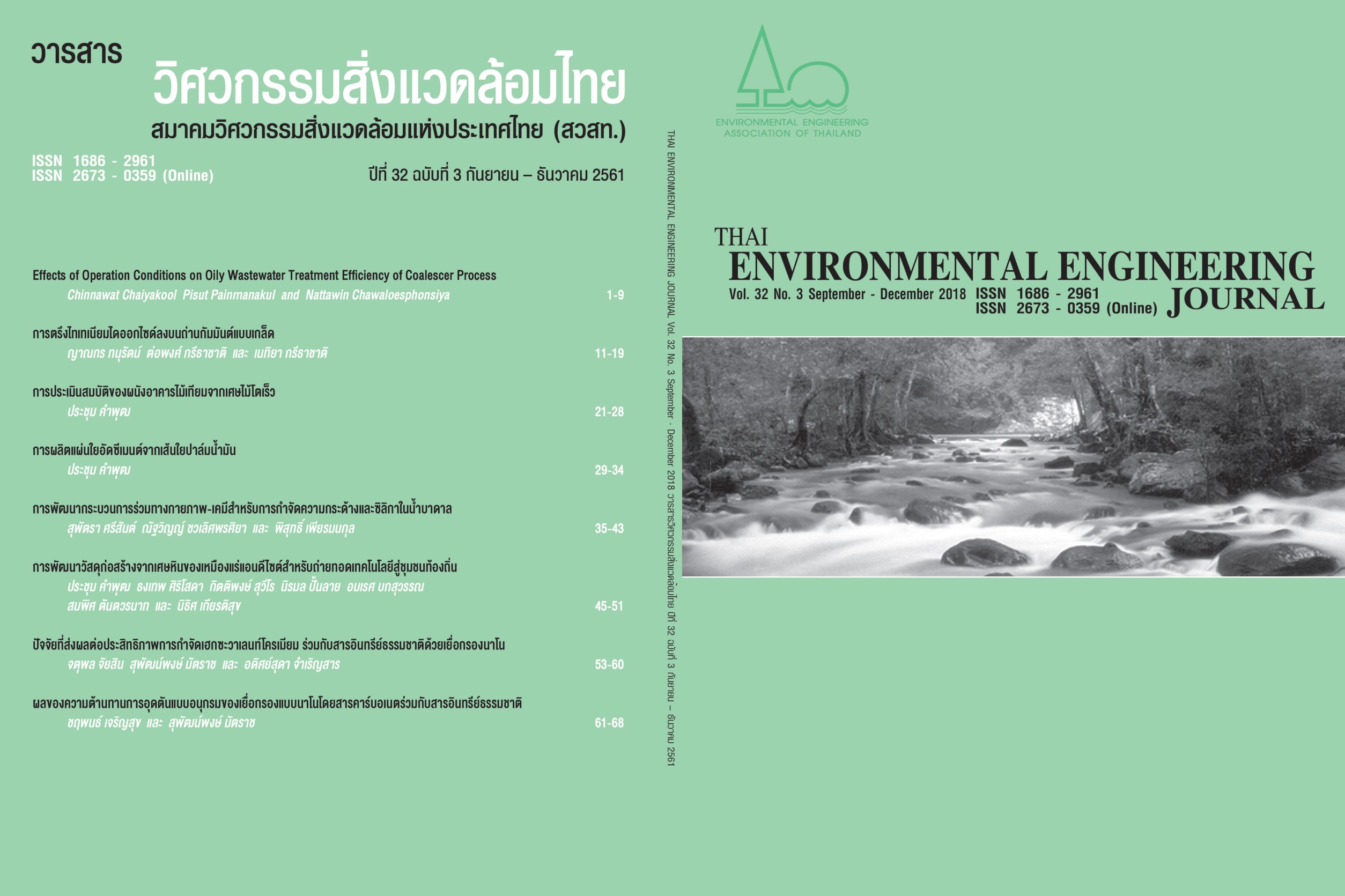Development of Construction Materials from Waste Rock of Mining Andesite for Technology Transfer to Local Communities
Main Article Content
Abstract
This research aims to develop the production, ratios, physical properties, mechanical properties, and thermal insulation of construction material products that are used andesite rock fragments as aggregates. The 4 research of construction materials include concrete, concrete block, interlocking block, and paving block which compare to general construction materials. The results found that andesite rocks fragments construction materials have production and ratios as same as general construction materials. The physical and mechanical properties of andesite rock fragments construction materials that density, strength, and thermal insulation are lower than the general construction materials. While the water absorption of andesite rock fragments construction materials are higher than general construction materials. However, all the andesite rock fragments construction materials can pass the standard and use as same as the general construction materials. The results are transferred and applied to local communities.
Article Details
References
[2] Thai Industrial Standards Institute. 1990. Standard for hollow non-load-bearing concrete masonry unit (TIS.58-2533). Ministry of industry. (in Thai)
[3] Thai Industrial Standards Institute. 2004. Community product standards on interlocking bricks (TCPS.602-2547). Ministry of industry. (in Thai)
[4] Thai Industrial Standards Institute. 1988. Standard for concrete flooring tiles (TIS.378-2531). Ministry of industry. (in Thai)
[5] American Society for Testing and Materials. 2017. ASTM C39 / C39M-17 Standard Test Method for Compressive Strength of Cylindrical Concrete Specimens. ASTM International. West Conshohocken, PA.
[6] American Society for Testing and Materials. 2015. ASTM C518-15 Standard Test Method for Steady-State Thermal Transmission Properties by Means of the Heat Flow Meter Apparatus. ASTM International. West Conshohocken, PA.
[7] El-Alfi, E.A., Radwan, A.M. and Ali, M.H. 2004. Physico-mechanical properties of basalt bricks. International Ceramic Review. 53(3): 178-181.
[8] Danupol Tanoyopas. 2010. Mineral and stone. 2nd edition, Faculty of Engineering Songkhla University Nakarin. (in Thai)
[9] Young, Hugh D. 1992. Hyper Physics. University Physics. Addison Wesley.


